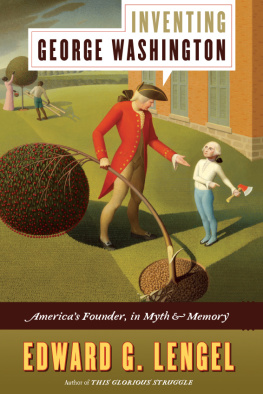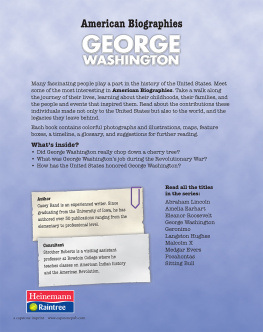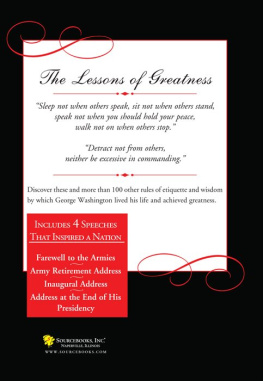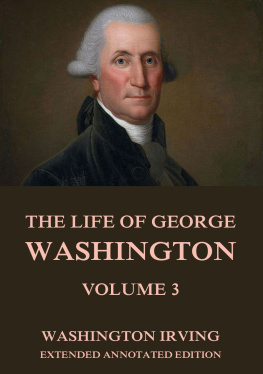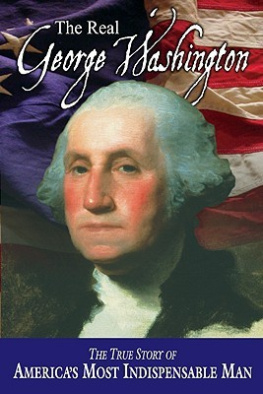Lengel - Inventing George Washington
Here you can read online Lengel - Inventing George Washington full text of the book (entire story) in english for free. Download pdf and epub, get meaning, cover and reviews about this ebook. publisher: HarperCollins, genre: History. Description of the work, (preface) as well as reviews are available. Best literature library LitArk.com created for fans of good reading and offers a wide selection of genres:
Romance novel
Science fiction
Adventure
Detective
Science
History
Home and family
Prose
Art
Politics
Computer
Non-fiction
Religion
Business
Children
Humor
Choose a favorite category and find really read worthwhile books. Enjoy immersion in the world of imagination, feel the emotions of the characters or learn something new for yourself, make an fascinating discovery.
Inventing George Washington: summary, description and annotation
We offer to read an annotation, description, summary or preface (depends on what the author of the book "Inventing George Washington" wrote himself). If you haven't found the necessary information about the book — write in the comments, we will try to find it.
Lengel: author's other books
Who wrote Inventing George Washington? Find out the surname, the name of the author of the book and a list of all author's works by series.
Inventing George Washington — read online for free the complete book (whole text) full work
Below is the text of the book, divided by pages. System saving the place of the last page read, allows you to conveniently read the book "Inventing George Washington" online for free, without having to search again every time where you left off. Put a bookmark, and you can go to the page where you finished reading at any time.
Font size:
Interval:
Bookmark:
To W. W. Abbot:
Gentleman, Scholar, Mentor, Friend
Contents
The most outrageous lies that can be invented will find believers if a man only tells them with all his might.
MARK TWAIN
G eorge Washingtons death on December 14, 1799, dealt a dreadful blow to public morale, leaving Americans feeling leaderless, orphaned, and insecure. For three decades, through war and peace, they had depended on him to see them through every trial. With his departure at the cusp of a new century, the nation seemed adrift and helpless in a world once again at war. They needed to believe that he was and would continue to be there for them.
The intensity of this desire ensured that Washington would indeed live on. People wanted to feel his presence, and so they did. He continued to serve the public on two levels. In public, Washingtons ghost brooded everlastingly on the national stage, dutifully acting out his eternal role as a symbol, the Father of Our Country. The private Washington, meanwhile, flitted almost tauntingly at the periphery of the national vision, always just out of reach even though Americans yearningly sought him as never before.
Both figures, public and private, were vital to Americans perceptions of their nation and of themselves. The public Washington, memorialized in engravings, marble statues, and hefty biographical tomes, acted as a bulwark to national pride. Like the flag, he symbolized the principles that made the United States both admirable and unique. In this form, however, he remained stiff, predictable, two-dimensional, and uninspiring. Ordinary Americans craved a living, breathing Washington, a human being who spoke to them on their own level but also told them who they were. By nature, he must be malleable; otherwise, he could not relate equally to men, women, and children of all time periods and social, economic, and religious backgrounds.
Over time, Washington became a national paradox. The contrasting and simultaneous urges to deify him as a symbol and understand him as a man produced tensions that have played out in every generation since his death. As some exalted him to the firmament, others sought to bring him down to earth. All laid claim to the real Washington, but their true object in many cases was to cater to the needs and desires of their political, ethnic, or religious communities. In so doing, they created a series of competing mythologies that alternatively depicted Washington as old and young, faultless and fallible, realistic and romantic, pious and skepticalin short, every imaginable sort of human being.
It was not enough just to say that Washington was this or that kind of man; facts had to be found to back up the assertion. And facts, like any other commodity, are often ruled by the law of supply and demand. Nowhere is this more marked than in the battle over Washingtons legacy. From his lifetime up to the present day, cheats and phonies in addition to well-meaning storytellers have capitalized on the American publics insatiable and ever-changing demand for information about his deeds, personality, thoughts, and appearance.
This trend appeared as early as 1775, when Washington took command of the Continental army. At that time few Americans had heard much about him or seen his face, but everyone wanted to know what he looked like. Unscrupulous printers obligingly responded by manufacturing thousands of fake portraits of the American leader supposedly taken from life, and raked in enormous profits. In the years that followed, and especially after his death, suppliers produced a never-ending stream of stories, artifacts, books, and documents that purported to put the real Washington on view, bringing him down to where people could touch and understand him. He became something for everyone, a man to inspire, soothe fears, and fit passing hopes and needs.
This faux Washington adopted new habits and donned fresh suits of clothes as he moved through time. Early in the nineteenth century, he conformed to classical standards of balance and restraint, strutting rigidly in an impeccable uniform of shimmering blue, tilting his tricorn hat at the ladies, and consorting solemnly with the august Founders. At midcentury, Washington adapted to the spread of Romantic-era mores by partially unbuttoning his vest, revealing a chest heaving with sexual and religious passions. Instead of doffing his hat in the presence of women, he panted after them with heartfelt intensity, and instead of bearing a nations cares on the strength of his intellect, he threw himself to his knees and prayed for deliverance. A few decades later, he morphed into a bespectacled collector of trinkets, living a typically cluttered and curiously vagabond late-Victorian existence as he wandered from inn to inn, leaving behind tumbled bedclothes and varied artifacts for future generations to covet.
In the 1920s, Washington adjusted readily to the reigning trends of materialism and skepticism. Renouncing his religious beliefs and pretensions to moral and intellectual greatness, he rolled up his shirtsleeves, plugged a well-chewed cigar into his mouth, donned a green eyeshade, and shuffled stacks of money. He had become a man of business. By the 1930s, however, years of reckless gambling, heavy smoking, and hard drinking had left him as ragged and emaciated as any denizen of a Depression-era flophouse. For the first time, Americans turned away from him. His 200th birthday in 1932 was a gala but passionless affair. People put up his portrait everywhere but shrank from shaking his bony hand. As the years passed he stiffened and slowed, like a run-down mechanical doll, his features growing less animated and freezing finally into a sunken-cheeked scowl.
Americans all but ignored Washington during World War II. Patriotic posters depicted the soldiers of Valley Forge marching side by side with the GIsbut left Washington out of sight. The 1950s idealized the American father but relegated the Father of Our Country to dry passages in school textbooks. Movie screens overflowing with giant grasshoppers and gelatinous blobs spared no room for the victor of Trenton and Yorktown. By the 1960s and 1970s, Washington no longer seemed to serve any purpose except as an image on the dollar bill. A rising, rebellious, young generation that had learned his deeds by rote in grade school drew no lessons from his life as it faced Vietnam and Watergate. He had settled firmly on the nations shelf, a near-forgotten symbol coated in cobwebs and dust.
I first encountered Washington at this low point. One of my earliest memories as a schoolboy in the early 1970s is an assignment on Washington that I completed in first grade. My teacheran old-school type who rapped children on the knuckles for not sitting up straight in their chairscommanded the class to fill in the blanks on a series of work sheets chronicling the events of Washingtons life, and then to combine them into a booklet covered with blue construction paper and a cutout profile of the great mans head. I filled in the answers on the work sheets in accordance with the mantras taught by rote: George Washington was the Father of Our Country, George Washington was our first president, and so on. But after I got my assignment back from the teacher, I filled in the blank white profile on the cover with huge, wildly rolling eyes, an unruly shock of black hair, and the inevitable mustache. Somehow I found him more likeable that way.
By the time I entered high school, I had fallen in love with history. Almost any subject appealed. My first research paper chronicled Napoleons dramatic invasion of Russia in 1812; later, through twelve years of undergraduate and graduate school, I turned to events as diverse as the persecution of witches in seventeenth-century Scotland, British perceptions of the Irish during the Great Famine of 184652, and common soldiers experiences of the First World War. I majored in European history but took and enjoyed courses about the history of the ancient world, Asia, the Middle East, and the nineteenth- and twentieth-century United States. Only one subject remained out of bounds so far as I was concerned: the Founding era of the United States. The briefest glimpse in that direction always revealed to me the same guardian figureGeorge Washington, scowling in gloomy forebodingand I invariably turned away.
Next pageFont size:
Interval:
Bookmark:
Similar books «Inventing George Washington»
Look at similar books to Inventing George Washington. We have selected literature similar in name and meaning in the hope of providing readers with more options to find new, interesting, not yet read works.
Discussion, reviews of the book Inventing George Washington and just readers' own opinions. Leave your comments, write what you think about the work, its meaning or the main characters. Specify what exactly you liked and what you didn't like, and why you think so.

